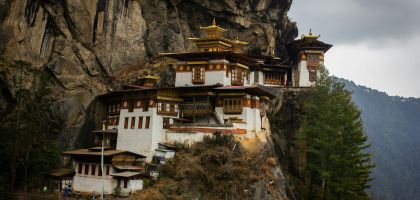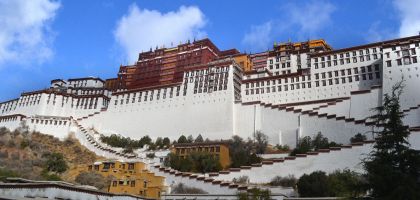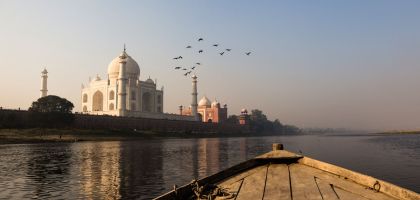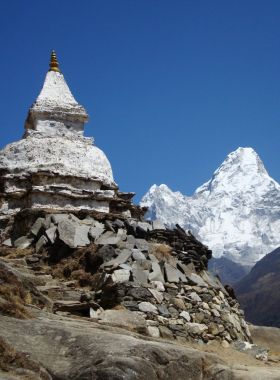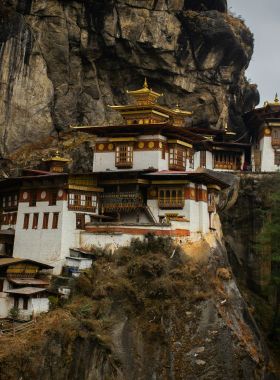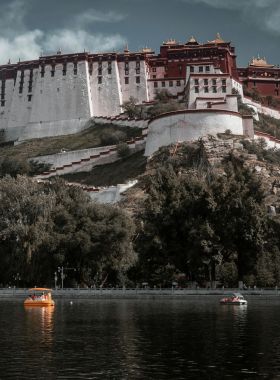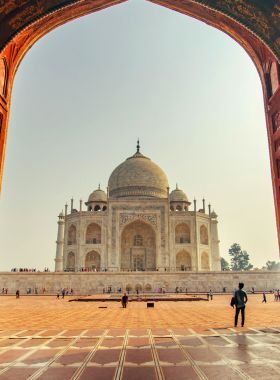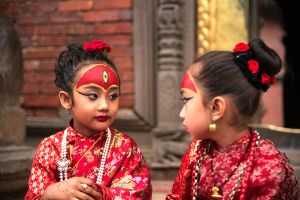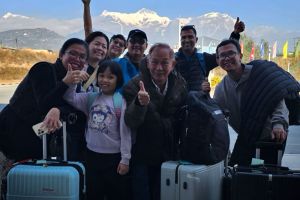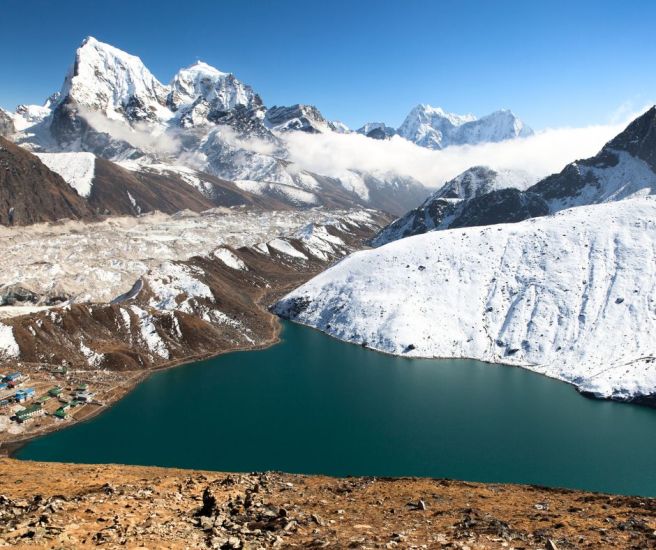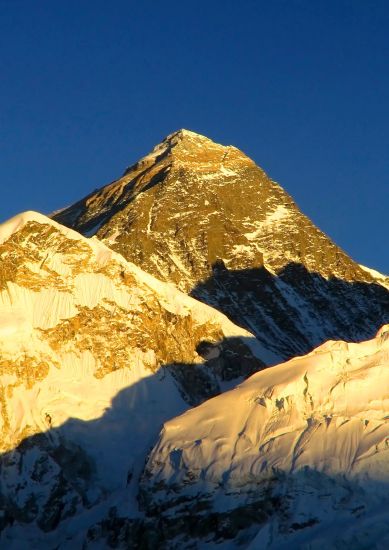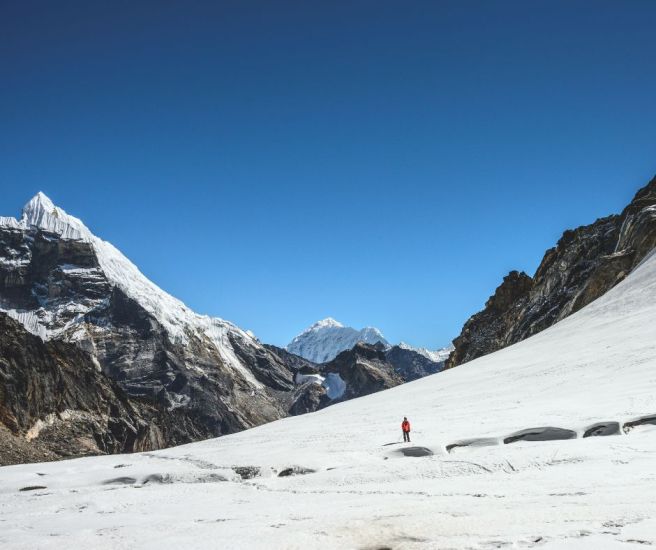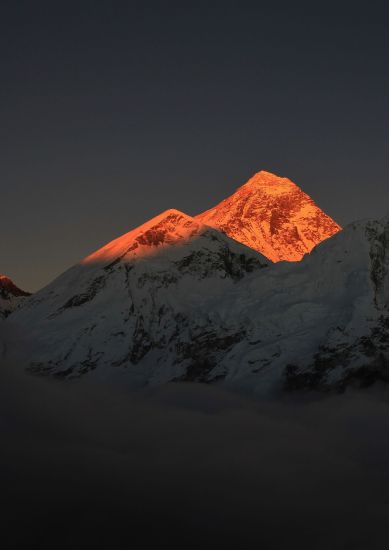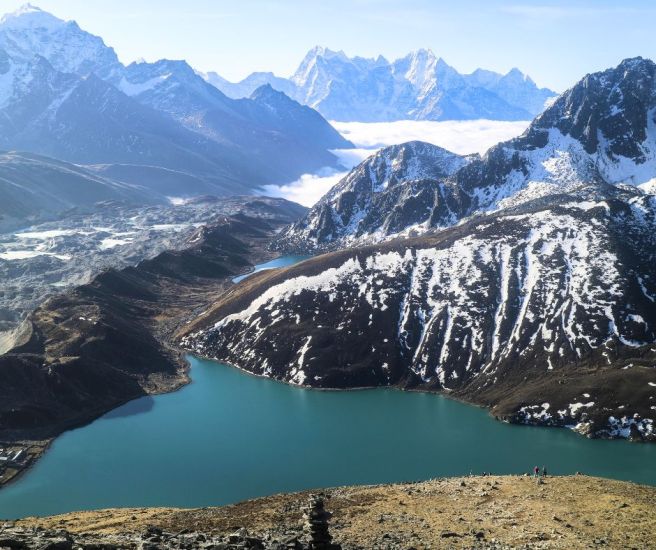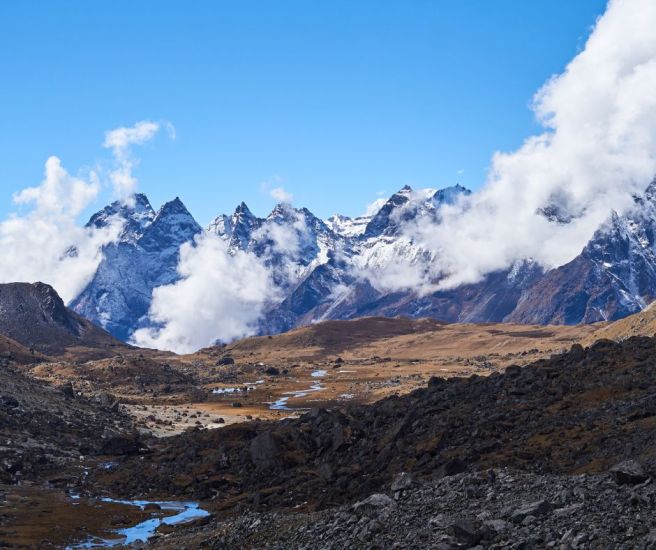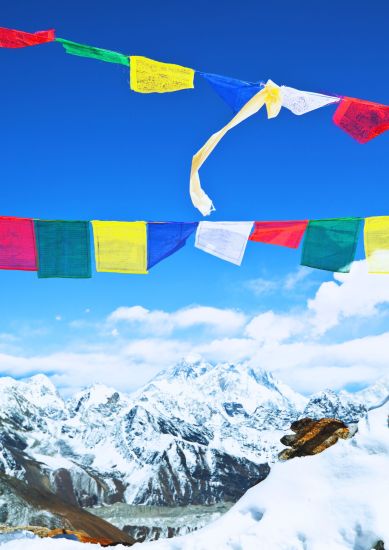Everest Base Camp Trek via Gokyo Lakes and Cho La Pass
18 Days / Nepal
Personalized Travel Advice

Dev Raj Nepal
+977 9851096523
Detailed Itinerary
01
DAY
01
Upon your arrival, you will be warmly welcomed at the airport and comfortably transferred to your hotel. Depending on your arrival time, you have the option to unwind and settle in at your hotel or venture out to explore the vibrant bazaars of Kathmandu. Wander through the lively streets, where the hustle and bustle of local markets offers a perfect introduction to the city’s rich culture and heritage.
Arrival in Kathmandu
Upon your arrival, you will be warmly welcomed at the airport and comfortably transferred to your hotel. Depending on your arrival time, you have the option to unwind and settle in at your hotel or venture out to explore the vibrant bazaars of Kathmandu. Wander through the lively streets, where the hustle and bustle of local markets offers a perfect introduction to the city’s rich culture and heritage.
02
DAY
02
After breakfast, start your day with a visit to Swayambhunath Stupa (Monkey Temple), where you can enjoy panoramic views of Kathmandu Valley and the peaceful atmosphere of this UNESCO site. Next, head to Kathmandu Durbar Square, a historic royal palace complex, surrounded by beautiful temples and ancient architecture.
From there, wander through the vibrant Ason Market, a lively bazaar filled with spices, textiles, and local goods, offering a glimpse into daily life in Kathmandu. Then, explore the bustling streets of Thamel, where you can pick up any last-minute trekking gear or souvenirs.
In the evening, meet with your trekking guide to finalize your preparations. This is a great time to check your gear, discuss the trek details, and get advice on what to expect along the way. By the end of the day, you’ll be ready for your adventure ahead!
Kathmandu: sightseeing and trek preparation
After breakfast, start your day with a visit to Swayambhunath Stupa (Monkey Temple), where you can enjoy panoramic views of Kathmandu Valley and the peaceful atmosphere of this UNESCO site. Next, head to Kathmandu Durbar Square, a historic royal palace complex, surrounded by beautiful temples and ancient architecture.
From there, wander through the vibrant Ason Market, a lively bazaar filled with spices, textiles, and local goods, offering a glimpse into daily life in Kathmandu. Then, explore the bustling streets of Thamel, where you can pick up any last-minute trekking gear or souvenirs.
In the evening, meet with your trekking guide to finalize your preparations. This is a great time to check your gear, discuss the trek details, and get advice on what to expect along the way. By the end of the day, you’ll be ready for your adventure ahead!
03
DAY
03
This morning, take a thrilling early flight to Lukla, the gateway to the Everest region. The flight offers stunning views of the snow-capped peaks and valleys, making it an unforgettable experience. Upon arrival, you’ll meet your trekking crew and prepare for the adventure ahead.
The trek from Lukla to Phakding is a gentle yet exciting introduction to the Everest region. You’ll follow a well-established trail that descends gradually through alpine forests. The path winds along the Dudh Koshi River, with scenic views of terraced fields and small villages along the way. As you cross several suspension bridges adorned with colorful prayer flags, you’ll hear the rush of the river below and feel the cool mountain air.
Along the trail, you’ll pass through villages such as Ghat and encounter friendly locals, including Sherpas, and children heading to school. The landscape is dotted with prayer wheels, stupas, and monasteries, giving you a glimpse into the spiritual heart of the region.
After around 3 to 4 hours of trekking, you’ll reach Phakding. This peaceful village lies in the shadow of the surrounding peaks, with lovely views of the valley. Upon arrival, take some time to relax, enjoy a warm meal, and absorb the stunning surroundings as you prepare for the more challenging days ahead.
Fly to Lukla, trek to Phakding
This morning, take a thrilling early flight to Lukla, the gateway to the Everest region. The flight offers stunning views of the snow-capped peaks and valleys, making it an unforgettable experience. Upon arrival, you’ll meet your trekking crew and prepare for the adventure ahead.
The trek from Lukla to Phakding is a gentle yet exciting introduction to the Everest region. You’ll follow a well-established trail that descends gradually through alpine forests. The path winds along the Dudh Koshi River, with scenic views of terraced fields and small villages along the way. As you cross several suspension bridges adorned with colorful prayer flags, you’ll hear the rush of the river below and feel the cool mountain air.
Along the trail, you’ll pass through villages such as Ghat and encounter friendly locals, including Sherpas, and children heading to school. The landscape is dotted with prayer wheels, stupas, and monasteries, giving you a glimpse into the spiritual heart of the region.
After around 3 to 4 hours of trekking, you’ll reach Phakding. This peaceful village lies in the shadow of the surrounding peaks, with lovely views of the valley. Upon arrival, take some time to relax, enjoy a warm meal, and absorb the stunning surroundings as you prepare for the more challenging days ahead.
04
DAY
04
Today’s trek takes you deeper into the heart of the Khumbu region. Walking through dense rhododendron and pine forests, you cross multiple high-suspension bridges, including the famous Hillary Suspension Bridge. As you ascend, the first glimpses of Everest come into view. The final stretch is a steep climb to Namche Bazaar, the lively trading hub of the Sherpa people. This vibrant town offers cozy teahouses, bakeries, and stunning mountain panoramas. Here, you settle in and begin adjusting to the altitude. Overnight at a Tea House.
Phakding to Namche Bazaar
Today’s trek takes you deeper into the heart of the Khumbu region. Walking through dense rhododendron and pine forests, you cross multiple high-suspension bridges, including the famous Hillary Suspension Bridge. As you ascend, the first glimpses of Everest come into view. The final stretch is a steep climb to Namche Bazaar, the lively trading hub of the Sherpa people. This vibrant town offers cozy teahouses, bakeries, and stunning mountain panoramas. Here, you settle in and begin adjusting to the altitude. Overnight at a Tea House.
05
DAY
05
To aid acclimatization, you spend the day exploring Namche Bazaar and hiking to Everest View Hotel, one of the highest-altitude hotels in the world. This hike provides breathtaking views of Everest, Lhotse, and Ama Dablam. You may also visit the Sherpa Culture Museum or the local monastery. After enjoying the views, you return to Namche to relax and prepare for the next leg of your journey. Overnight at a Tea House.
Namche Bazaar: Rest and acclimatization
To aid acclimatization, you spend the day exploring Namche Bazaar and hiking to Everest View Hotel, one of the highest-altitude hotels in the world. This hike provides breathtaking views of Everest, Lhotse, and Ama Dablam. You may also visit the Sherpa Culture Museum or the local monastery. After enjoying the views, you return to Namche to relax and prepare for the next leg of your journey. Overnight at a Tea House.
06
DAY
06
Today’s journey takes us from Namche Bazaar to the charming village of Dole. As we ascend, we’ll be treated to stunning views of the Dudh Koshi River, serene stupas, and legendary Himalayan peaks, including Ama Dablam, Lhotse, Thamserku, and Everest. Keep a lookout—you might spot wildlife like Musk Deer or Himalayan Tahrs along the way.
After about two hours, we’ll reach Mong La Pass, where we’ll pause for a short break. From there, the trail leads us through vibrant rhododendron forests and quaint Sherpa settlements. The path gradually climbs, with a few steep sections, eventually bringing us to the village of Phortse Thanga. We’ll continue our scenic trek until we arrive at Dole, where we’ll spend the night.
Namche Bazaar to Dole
Today’s journey takes us from Namche Bazaar to the charming village of Dole. As we ascend, we’ll be treated to stunning views of the Dudh Koshi River, serene stupas, and legendary Himalayan peaks, including Ama Dablam, Lhotse, Thamserku, and Everest. Keep a lookout—you might spot wildlife like Musk Deer or Himalayan Tahrs along the way.
After about two hours, we’ll reach Mong La Pass, where we’ll pause for a short break. From there, the trail leads us through vibrant rhododendron forests and quaint Sherpa settlements. The path gradually climbs, with a few steep sections, eventually bringing us to the village of Phortse Thanga. We’ll continue our scenic trek until we arrive at Dole, where we’ll spend the night.
07
DAY
07
Today’s trek involves a steady and gradual ascent as we make our way to the small settlement of Machhermo, where we’ll stop for lunch. Like the other hamlets in this remote valley, Machhermo is a cluster of a few buildings, many of which remain unoccupied for much of the year. Families from Khumjung and Khunde typically own land here and use it for summer yak grazing.
This day serves as an important opportunity for acclimatization as we prepare for the upcoming climb to Gokyo Ri (5483m). We’ll keep the pace relaxed, but in the afternoon, you may choose to take a gentle hike up the ridge behind Luza for a rewarding view of the Gokyo Valley. Tonight, we’ll stay in a local tea house.
Trek from Dole to Machhermo
Today’s trek involves a steady and gradual ascent as we make our way to the small settlement of Machhermo, where we’ll stop for lunch. Like the other hamlets in this remote valley, Machhermo is a cluster of a few buildings, many of which remain unoccupied for much of the year. Families from Khumjung and Khunde typically own land here and use it for summer yak grazing.
This day serves as an important opportunity for acclimatization as we prepare for the upcoming climb to Gokyo Ri (5483m). We’ll keep the pace relaxed, but in the afternoon, you may choose to take a gentle hike up the ridge behind Luza for a rewarding view of the Gokyo Valley. Tonight, we’ll stay in a local tea house.
08
DAY
08
Today’s trek begins with a climb up a ridge, offering breathtaking views of Mount Cho Oyu. From here, we continue our journey toward Everest Base Camp via the scenic Gokyo Cho La Pass route. Along the way, we descend to the riverbank, passing through the small settlement of Phangkha.
As we progress, we encounter the impressive terminal moraine of the Ngozumpa Glacier. After ascending this moraine, we head towards the first of the Gokyo Lakes—Longpongo—crossing a stream via an iron bridge. Nearby, you’ll come across Lama’s Footprints imprinted on a stone, a sacred marker along the trail. A bit farther on lies the second lake, Taboche Tsho, its calm, turquoise waters shimmering in the sunlight. This inspiring view motivates the final push to the third lake, Dudh Pokhari, beside which the charming Gokyo village is nestled.
Machhermo to Gokyo
Today’s trek begins with a climb up a ridge, offering breathtaking views of Mount Cho Oyu. From here, we continue our journey toward Everest Base Camp via the scenic Gokyo Cho La Pass route. Along the way, we descend to the riverbank, passing through the small settlement of Phangkha.
As we progress, we encounter the impressive terminal moraine of the Ngozumpa Glacier. After ascending this moraine, we head towards the first of the Gokyo Lakes—Longpongo—crossing a stream via an iron bridge. Nearby, you’ll come across Lama’s Footprints imprinted on a stone, a sacred marker along the trail. A bit farther on lies the second lake, Taboche Tsho, its calm, turquoise waters shimmering in the sunlight. This inspiring view motivates the final push to the third lake, Dudh Pokhari, beside which the charming Gokyo village is nestled.
09
DAY
09
Today is dedicated to acclimatisation as we hike up to Gokyo Ri, a small peak above Gokyo village. The early morning climb offers spectacular panoramic views of the entire Khumbu region. As we ascend, the vistas grow even more stunning, with four of Nepal’s highest peaks—Cho Oyu, Everest, Lhotse, and Makalu—visible in all their glory.
After reaching the fourth lake, Thonak Tsho, we take some time to enjoy its peaceful beauty. We’ll then retrace our steps back to the third lake. If our energy and time allow, we may continue on to the fifth lake, Ngozumba Tsho. From here, we’re treated to a captivating view of the Ngozumba Glacier, the longest glacier in the Himalayas. We’ll return to Gokyo for the night, rested and ready for the next phase of our journey.
Acclimatization Day at Gokyo & Hike to Gokyo Ri
Today is dedicated to acclimatisation as we hike up to Gokyo Ri, a small peak above Gokyo village. The early morning climb offers spectacular panoramic views of the entire Khumbu region. As we ascend, the vistas grow even more stunning, with four of Nepal’s highest peaks—Cho Oyu, Everest, Lhotse, and Makalu—visible in all their glory.
After reaching the fourth lake, Thonak Tsho, we take some time to enjoy its peaceful beauty. We’ll then retrace our steps back to the third lake. If our energy and time allow, we may continue on to the fifth lake, Ngozumba Tsho. From here, we’re treated to a captivating view of the Ngozumba Glacier, the longest glacier in the Himalayas. We’ll return to Gokyo for the night, rested and ready for the next phase of our journey.
10
DAY
10
After acclimatising at Gokyo village, we continue our trek towards Thagnak. The path today is shorter, with a series of ups and downs, but we won’t be gaining much altitude. Along the way, we pass by the impressive Ngozumpa Glacier, taking in the stunning views of the glacier’s vast expanse.
Thagnak village, nestled beside the glacier, offers a peaceful setting for rest. It’s strategically located, making it an ideal stop for trekkers preparing to tackle the challenging Cho-La High Pass (5330m) in the coming days. We’ll settle in for the night, surrounded by the serenity of the Himalayas.
Gokyo to Thagnak
After acclimatising at Gokyo village, we continue our trek towards Thagnak. The path today is shorter, with a series of ups and downs, but we won’t be gaining much altitude. Along the way, we pass by the impressive Ngozumpa Glacier, taking in the stunning views of the glacier’s vast expanse.
Thagnak village, nestled beside the glacier, offers a peaceful setting for rest. It’s strategically located, making it an ideal stop for trekkers preparing to tackle the challenging Cho-La High Pass (5330m) in the coming days. We’ll settle in for the night, surrounded by the serenity of the Himalayas.
11
DAY
11
Today’s trek takes us to the challenging peak of Cho La Pass, navigating difficult terrain and glacier moraines. This will be the most demanding day of the journey. If the pass is covered in snow, the ascent becomes particularly tough and risky. After several hours of climbing, we reach the summit of Cho La Pass, where we’re rewarded with breathtaking views of Cho La Lake and Mount Cholatse.
As we descend, the path becomes slippery and more hazardous, requiring careful footing. Despite the challenges, the landscapes throughout this section of the Everest Base Camp Trek via Gokyo Cho La Pass are absolutely stunning. After approximately seven hours of trekking, we’ll arrive in Dzongla, where we’ll rest for the night.
Thagnak to Dzongla via Cho La Pass
Today’s trek takes us to the challenging peak of Cho La Pass, navigating difficult terrain and glacier moraines. This will be the most demanding day of the journey. If the pass is covered in snow, the ascent becomes particularly tough and risky. After several hours of climbing, we reach the summit of Cho La Pass, where we’re rewarded with breathtaking views of Cho La Lake and Mount Cholatse.
As we descend, the path becomes slippery and more hazardous, requiring careful footing. Despite the challenges, the landscapes throughout this section of the Everest Base Camp Trek via Gokyo Cho La Pass are absolutely stunning. After approximately seven hours of trekking, we’ll arrive in Dzongla, where we’ll rest for the night.
12
DAY
12
You will head toward Lobuche after leaving Dzongla, following the moraine as it descends toward Chola Lake. As we continue towards Ama Dablam, we’ll follow the Khumbu Glacier, passing memorials dedicated to climbers who lost their lives in this challenging region. Unlike the previous day’s tough climb, the ascent to Lobuche is more pleasant, and we follow the Imja Khola River as we make our way to the village. The trek will take about four hours to complete.
Dzongla to Lobuche
You will head toward Lobuche after leaving Dzongla, following the moraine as it descends toward Chola Lake. As we continue towards Ama Dablam, we’ll follow the Khumbu Glacier, passing memorials dedicated to climbers who lost their lives in this challenging region. Unlike the previous day’s tough climb, the ascent to Lobuche is more pleasant, and we follow the Imja Khola River as we make our way to the village. The trek will take about four hours to complete.
13
DAY
13
Today, we begin our trek towards Everest Base Camp, following the path that once led to the vast Gorak Shep Lake. As we move forward, we’ll pass the memorials dedicated to the Indian army mountaineers. The trail here can be tricky, so it’s important to stay close to our lead Sherpa for guidance. The high altitude makes the walk more challenging, with thin air adding to the strain. We navigate through rocky dunes, moraines, and streams before finally reaching the iconic Everest Base Camp.
At the Base Camp, we’ll see brightly colored tents of mountaineers, standing in stark contrast to the otherwise gray surroundings, especially during spring. From here, we can enjoy views of the surrounding peaks, including Nuptse, Khumbutse, and Pumori. After soaking in the views, we head back to Gorak Shep for a restful night.
While the sunrise from Kala Patthar is a popular choice, the sunset view is even more stunning. The sight of the setting sun casting golden light on the snow-capped mountains creates a breathtaking scene. If you wish to visit Kala Patthar today for the sunset rather than the following morning, please inform your guide, and they will make the necessary arrangements.
Lobuche to Everest Base Camp & Gorakshep
Today, we begin our trek towards Everest Base Camp, following the path that once led to the vast Gorak Shep Lake. As we move forward, we’ll pass the memorials dedicated to the Indian army mountaineers. The trail here can be tricky, so it’s important to stay close to our lead Sherpa for guidance. The high altitude makes the walk more challenging, with thin air adding to the strain. We navigate through rocky dunes, moraines, and streams before finally reaching the iconic Everest Base Camp.
At the Base Camp, we’ll see brightly colored tents of mountaineers, standing in stark contrast to the otherwise gray surroundings, especially during spring. From here, we can enjoy views of the surrounding peaks, including Nuptse, Khumbutse, and Pumori. After soaking in the views, we head back to Gorak Shep for a restful night.
While the sunrise from Kala Patthar is a popular choice, the sunset view is even more stunning. The sight of the setting sun casting golden light on the snow-capped mountains creates a breathtaking scene. If you wish to visit Kala Patthar today for the sunset rather than the following morning, please inform your guide, and they will make the necessary arrangements.
14
DAY
14
We set off early in the morning, braving the pre-dawn darkness and cold temperatures, common at this altitude. As we trek, familiar peaks like Lingtren, Khumbutse, and Changtse rise majestically to the east, while Mount Everest gradually reveals itself. Upon reaching Kala Patthar, we’re rewarded with stunning 360-degree views of Everest and the surrounding peaks. After taking in the breathtaking scenery and snapping plenty of photos, we return to Lobuche for a well-deserved night’s rest.
After spending a while at the Kala Patthar viewpoint we will descend to Gorak Shep for breakfast and then rest for some time. Then we will head to Pheriche – the destination for the day.
Gorakshep to Kalapatthar to Pheriche
We set off early in the morning, braving the pre-dawn darkness and cold temperatures, common at this altitude. As we trek, familiar peaks like Lingtren, Khumbutse, and Changtse rise majestically to the east, while Mount Everest gradually reveals itself. Upon reaching Kala Patthar, we’re rewarded with stunning 360-degree views of Everest and the surrounding peaks. After taking in the breathtaking scenery and snapping plenty of photos, we return to Lobuche for a well-deserved night’s rest.
After spending a while at the Kala Patthar viewpoint we will descend to Gorak Shep for breakfast and then rest for some time. Then we will head to Pheriche – the destination for the day.
15
DAY
15
We begin our descent, trekking through hillsides blanketed with rhododendron and juniper trees. After crossing a prayer-flag-adorned bridge over the Dudh Koshi River, we follow the Dudh Koshi gorge as it descends swiftly through pine forests. Along the way, we might spot colorful pheasants and mountain goats. The trail leads us to Sansa, where we can enjoy stunning views of Ama Dablam, Thamserku, and Nuptse. We continue along winding paths and through forests before finally reaching Namche Bazaar. Overnight in Namche Bazaar.
Pheriche to Namche Bazaar
We begin our descent, trekking through hillsides blanketed with rhododendron and juniper trees. After crossing a prayer-flag-adorned bridge over the Dudh Koshi River, we follow the Dudh Koshi gorge as it descends swiftly through pine forests. Along the way, we might spot colorful pheasants and mountain goats. The trail leads us to Sansa, where we can enjoy stunning views of Ama Dablam, Thamserku, and Nuptse. We continue along winding paths and through forests before finally reaching Namche Bazaar. Overnight in Namche Bazaar.
16
DAY
16
Today, the trail descends steeply, requiring careful footing as we navigate the rocky terrain, with our tired legs working hard to keep steady. After crossing suspension bridges over the swiftly flowing Dudh Koshi and its tributaries, the path levels out, offering a more natural and gradual descent. Once we reach Lukla, we can relax and stretch out those sore muscles while reflecting on the incredible journey of the past few days. Overnight in Lukla.
Namche Bazaar to Lukla
Today, the trail descends steeply, requiring careful footing as we navigate the rocky terrain, with our tired legs working hard to keep steady. After crossing suspension bridges over the swiftly flowing Dudh Koshi and its tributaries, the path levels out, offering a more natural and gradual descent. Once we reach Lukla, we can relax and stretch out those sore muscles while reflecting on the incredible journey of the past few days. Overnight in Lukla.
17
DAY
17
Today, we take a short flight back to Kathmandu. Upon arrival in Kathmandu, enjoy your free time either exploring the city or by just relaxing in your hotel.
Flight from Lukla to Kathmandu
Today, we take a short flight back to Kathmandu. Upon arrival in Kathmandu, enjoy your free time either exploring the city or by just relaxing in your hotel.
18
DAY
18
Today, after breakfast, you will be transferred to the airport for departure.
Departure
Today, after breakfast, you will be transferred to the airport for departure.
Includes / Excludes
Inclusions
-
All accommodations on a twin sharing basis
-
All ground transfers
-
All meals mentioned in the itinerary
-
Domestic Flights to and from Lukla
-
Experienced, government-authorized guide and porters.
-
Wages for the guides and porters.
-
Hygienic meals (breakfast, lunch, and dinner) throughout the trek.
-
Essential trekking gear (sleeping bag, warm layers, etc.)
-
Service charges and applicable government taxes
-
National Park Entry Fee
Exclusions
-
Meals not specified in the itinerary
-
International Airfare
-
Nepal Visa Fee
-
Travel Insurance
-
Personal expenses, including shopping.
-
Fees for showers and electronic charging at guesthouses during the trek.
-
Alcoholic drinks, chocolates, tea, and coffee.
-
Tips for the guide and porter.
Trip Info
The best time to do this Trek is during the spring (March to May) and autumn (September to November) seasons, offering ideal weather conditions and breathtaking views.
Spring (March to May): Spring is one of the most favored seasons for trekking in Nepal. The weather during this time is relatively mild, with daytime temperatures ranging from 10°C to 15°C (50°F to 59°F) at lower altitudes, and cooler temperatures at higher elevations. The skies are clear, providing spectacular views of the snow-capped peaks. This is also the time when rhododendrons, orchids, and other wildflowers bloom, creating a colorful contrast against the rugged terrain.
Autumn (September to November): Autumn is considered the best overall time for this trek. The monsoon rains have just ended, leaving the air crisp, clean, and clear, making it perfect for mountain views. The temperature during the day is comfortable, ranging from 5°C to 15°C (41°F to 59°F), while nights can be chilly, especially at higher altitudes. This season is less crowded than spring, but still sees a steady flow of trekkers, offering a more peaceful trekking experience. The clear skies and breathtaking views of the Himalayas make this an excellent time for photography and enjoying panoramic vistas.
Food on this Trek offers a delightful mix of traditional Nepali and Tibetan cuisine, providing trekkers with local flavors and ingredients. Dal Bhat, a hearty and nutritious meal consisting of rice, lentil soup, and vegetables, is a staple in Nepali trekking cuisine and is often served multiple times a day. It’s usually accompanied by a side of pickle for extra flavor. Momo, steamed or fried dumplings filled with meat or vegetables, are a popular snack or lunch option along the trail. For breakfast, Tibetan bread, a type of flatbread served with butter or jam, is commonly enjoyed, providing energy for the day ahead. Warm soups, such as vegetable soup, noodle soup, or thukpa (a Tibetan noodle soup), are common, offering comfort and warmth, especially in the colder regions. Most restaurants also offer Nepali Ramen, such as, Waiwai which is a flavorful comfort good.
In Kathmandu, the accommodations are more modern and comfortable, with a range of hotels available that cater to different budgets. You can expect private rooms with en-suite bathrooms, hot showers, and other amenities like Wi-Fi and room service, providing a relaxing stay before and after your trek.
In the higher-altitude regions of the Everest region, accommodations consist of guesthouses, which are simple, family-run lodges that provide a place to sleep, meals, and a warm environment. Guesthouses are basic but functional, with rooms typically featuring twin beds, wooden floors, and a blanket for warmth. Some guesthouses may offer additional amenities such as hot water (for a fee) or charging facilities, though this varies from place to place. Though the accommodations in the teahouses can be simple, they are a fundamental part of the trekking experience, allowing trekkers to connect with the local culture and landscape while enjoying the warmth and hospitality of the local people.
Clothing & Footwear
- Waterproof and breathable jacket and pants
- Insulating layers (fleece, down jacket)
- Thermal base layers
- Hiking pants and shorts
- Warm hat and sun hat
- Gloves
- Warm socks
- Sturdy, waterproof hiking boots
- Comfortable sandals or shoes
Gear & Accessories
- Backpack (50-70 liters)
- Sleeping bag (rated for cold temperatures)
- Trekking poles
- Headlamp with extra batteries
- Sunglasses
- Sunscreen and lip balm
- Water bottles or hydration system
- Water purification tablets or filter
- Toiletries
- Quick-dry towel
Remember to pack light and efficiently.
Trekking in the Everest region comes with its set of challenges and risks. The most significant risk is altitude sickness, as trekkers ascend to altitudes above 3,000 meters. Without proper acclimatization, this can become a serious concern. The unpredictable weather in the region can lead to sudden changes, including delays or cancellations of flights to and from Lukla, which could disrupt the trekking schedule. Additionally, the physical demands of long days at high altitudes can be overwhelming for some, requiring significant stamina and preparation. Medical facilities are sparse, and emergency evacuation can be costly and time-consuming. Furthermore, accommodation in the remote villages is basic, and trekkers should be ready for a more rustic experience compared to urban comfort.
On the other hand, the rewards of trekking in the Everest region are equally compelling. The awe-inspiring views of Mount Everest and the surrounding peaks are an unparalleled experience, offering panoramic vistas that make every step worth the effort. As you journey through Sherpa villages, you’ll gain an authentic insight into their culture, traditions, and hospitality. The sense of achievement upon reaching base camp, surrounded by some of the world’s most dramatic landscapes, is truly fulfilling. The trek also offers a rare opportunity for introspection and personal growth, pushing both your physical and mental boundaries while immersing you in the spiritual beauty of the region.
Breathtaking Scenery
When you go trekking in Nepal, especially in the Everest region, expect to be surrounded by some of the world’s most stunning landscapes. From majestic snow-capped peaks like Mount Everest to serene valleys, glaciers, and alpine forests, the views will leave you in awe. Every step on the trail offers a new perspective of the Himalayas, making it one of the most unforgettable trekking experiences in the world.
Cultural Encounters
Trekking in Nepal is as much about the culture as it is about the landscape. Along the way, you’ll pass through traditional Sherpa villages, where you can engage with the locals and learn about their way of life. The rich Buddhist culture of the region will be evident through the monasteries you visit, the prayers you hear, and the sight of prayer flags fluttering in the mountain breeze. These interactions provide a deep insight into the unique traditions and spiritual practices of the Sherpa people.
Challenging Terrain
Be prepared for a physically demanding adventure. Trekking in Nepal, especially at higher altitudes, means navigating rocky paths, steep ascents, and long days on the trail. While the terrain can be challenging, the sense of accomplishment at the end of each day is unmatched. The trek requires a good level of fitness and preparation, but the stunning scenery and cultural experiences make it all worth the effort.
Basic Accommodations
Accommodations during your trek will generally be simple, yet comfortable. You’ll stay in teahouses, which offer basic rooms and facilities, but these cozy spots are perfect for resting after a long day of trekking. You’ll enjoy hot meals, often featuring traditional Nepali dishes like dal bhat, as well as international options. The accommodations may be basic, but the warm hospitality of the Sherpa hosts will make you feel right at home.
Unpredictable Weather
The weather in the Everest region can be unpredictable, especially at higher altitudes. Expect cold temperatures, rain, and even snow during certain times of the year. It’s essential to pack appropriate gear, including layers for warmth, waterproofs, and sturdy trekking boots. While the weather can pose challenges, it also adds to the adventure, giving you a truly authentic trekking experience in Nepal.
FAQs
Personalized Travel Advice

Dev Raj Nepal
+977 9851096523

